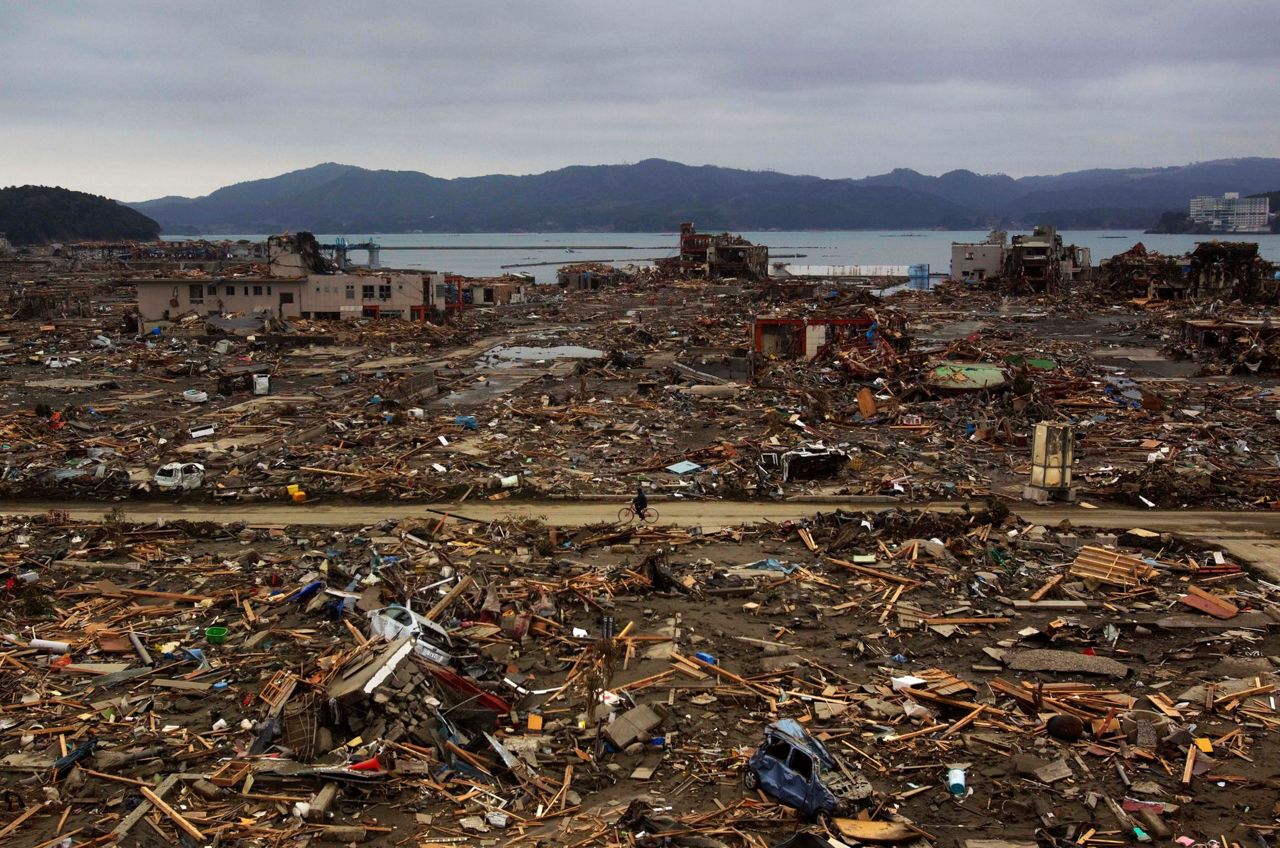TOKYO (AP) — Thursday marks the 10th anniversary of a massive earthquake, tsunami and nuclear disaster that struck Japan's northeastern coast. Here is a timeline of events:
___
— March 11, 2011: A magnitude 9.0 earthquake strikes off the coast at 2:46 p.m., triggering a towering tsunami that reaches land within half an hour. The tsunami smashes into the Fukushima Daiichi nuclear plant, destroying its power and cooling systems and triggering meltdowns at three reactors.
— March 12: A hydrogen explosion occurs at the plant’s No. 1 reactor, sending radiation into the air. Residents within a 20-kilometer (12-mile) radius are ordered to evacuate. Similar explosions occur at two other reactors over the following days.
— April 12: Japan raises the accident to category 7, the highest level on the International Nuclear and Radiological Event Scale, from an earlier 5, based on radiation released into the atmosphere.
— April 24: The government designates a 2-kilometer (1.25-mile) exclusion zone around the nuclear plant spanning nine municipalities.
— Dec. 16: After workers struggle for months to stabilize the plant, Japan declares a “cold shutdown,” with core temperatures and pressures down to a level where nuclear chain reactions do not occur.
— July 23, 2012: A government-appointed independent investigation concludes that the nuclear accident was caused by a lack of adequate safety and crisis management by the plant's operator, Tokyo Electric Power Co., lax oversight by nuclear regulators and collusion.
— April 1, 2014: The evacuation order is eased for a city west of the wrecked nuclear plant. Parts of at least eight other municipalities are allowed to reopen over the next three years, though the number of returnees remains low due to a lack of jobs and lingering radiation concerns.
— Dec. 22:TEPCO completes the removal of all spent nuclear fuel rods from the No. 4 reactor cooling pool, an initial milestone in the plant’s decades-long decommissioning.
— 2015-2019: Small robots equipped with cameras and sensors are sent into the damaged reactors but provide only limited views of the highly radioactive melted fuel debris. That makes plans for its removal more difficult.
— Feb. 10, 2020: A government panel recommends the controlled release into the sea of rapidly increasing amounts of leaked radioactive cooling water at the Fukushima plant. TEPCO says its 1.37 million ton storage capacity will be full in fall 2022.
— Dec. 10: Police say the death toll from the disaster, mostly from the tsunami, reaches 18,426, including 2,527 whose remains have not been found.
— Feb. 13, 2021: A magnitude 7.3 earthquake hits off the Fukushima coast, leaving one dead and injuring more than 180 people. It causes minor damage at the nuclear plant.
— March 6: Prime Minister Yoshihide Suga visits Fukushima and pledges to accelerate decontamination efforts so all remaining no-go zones can be reopened, but doesn’t give a timeframe.
Copyright 2021 The Associated Press. All rights reserved. This material may not be published, broadcast, rewritten or redistributed without permission.








